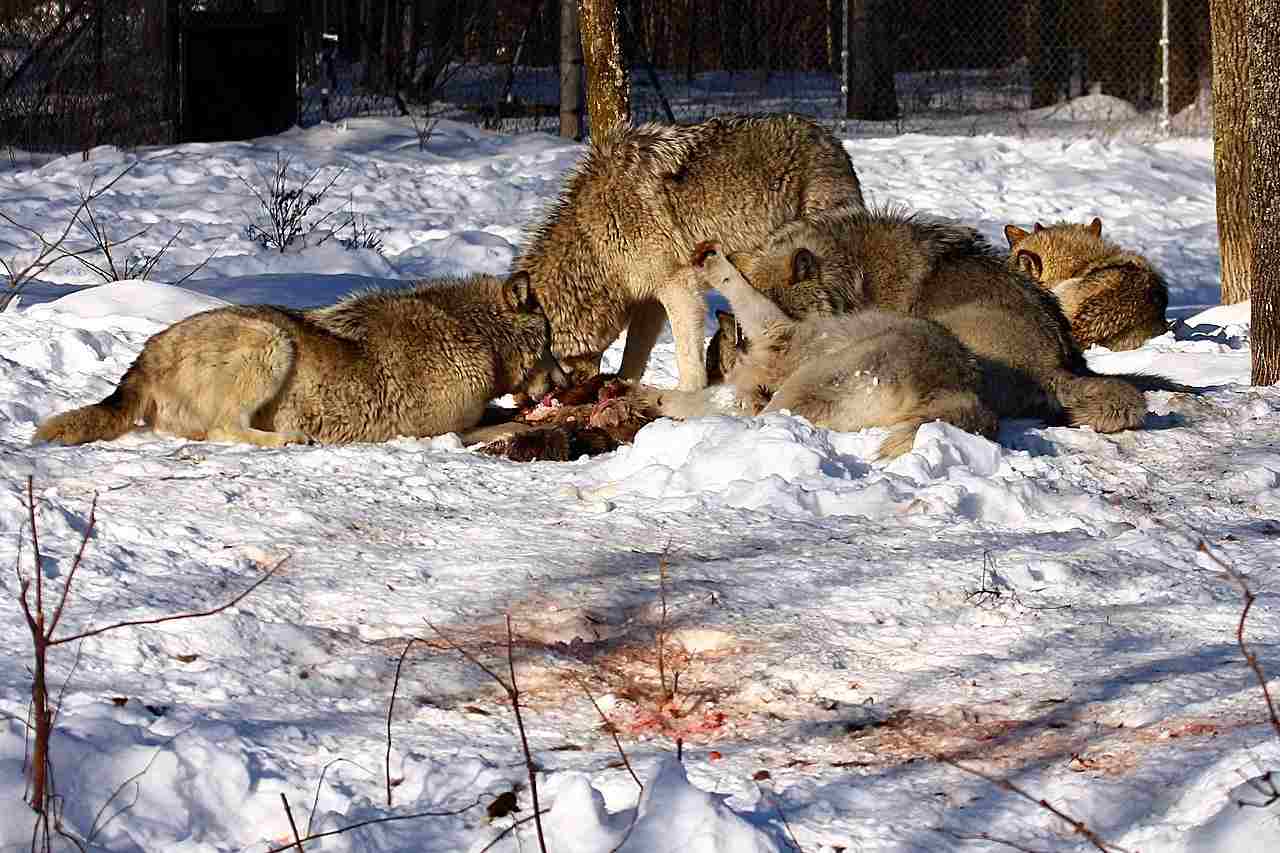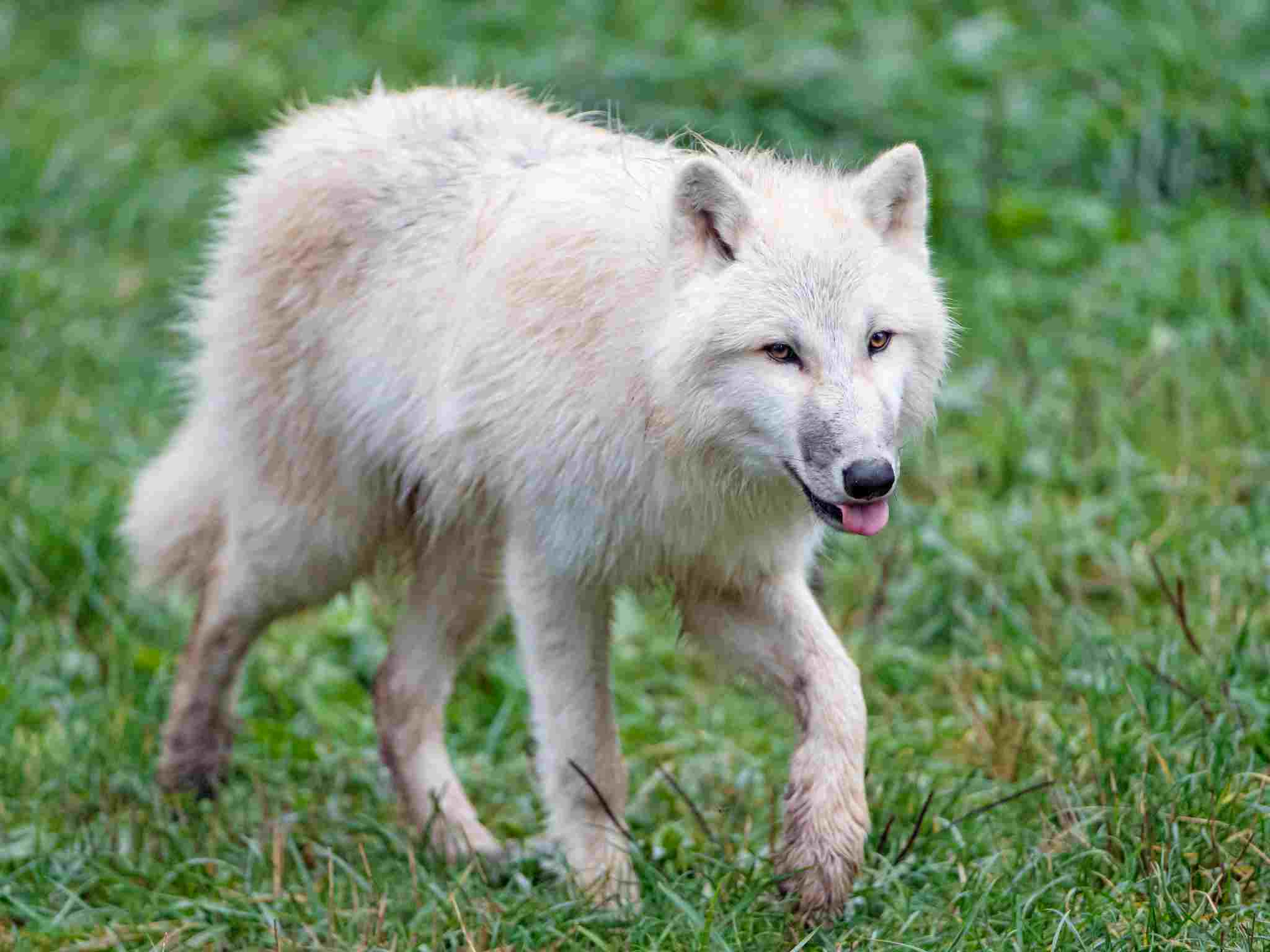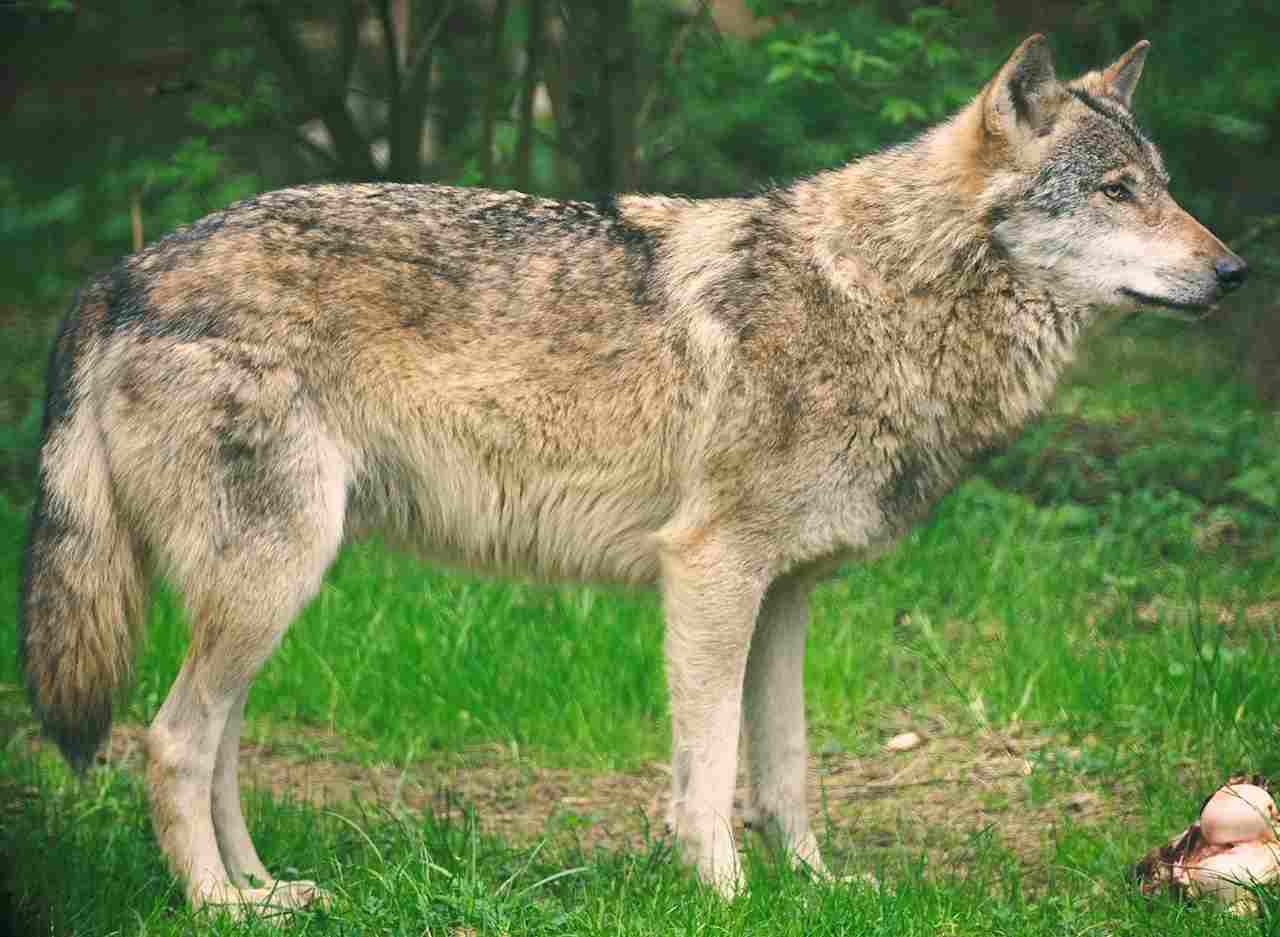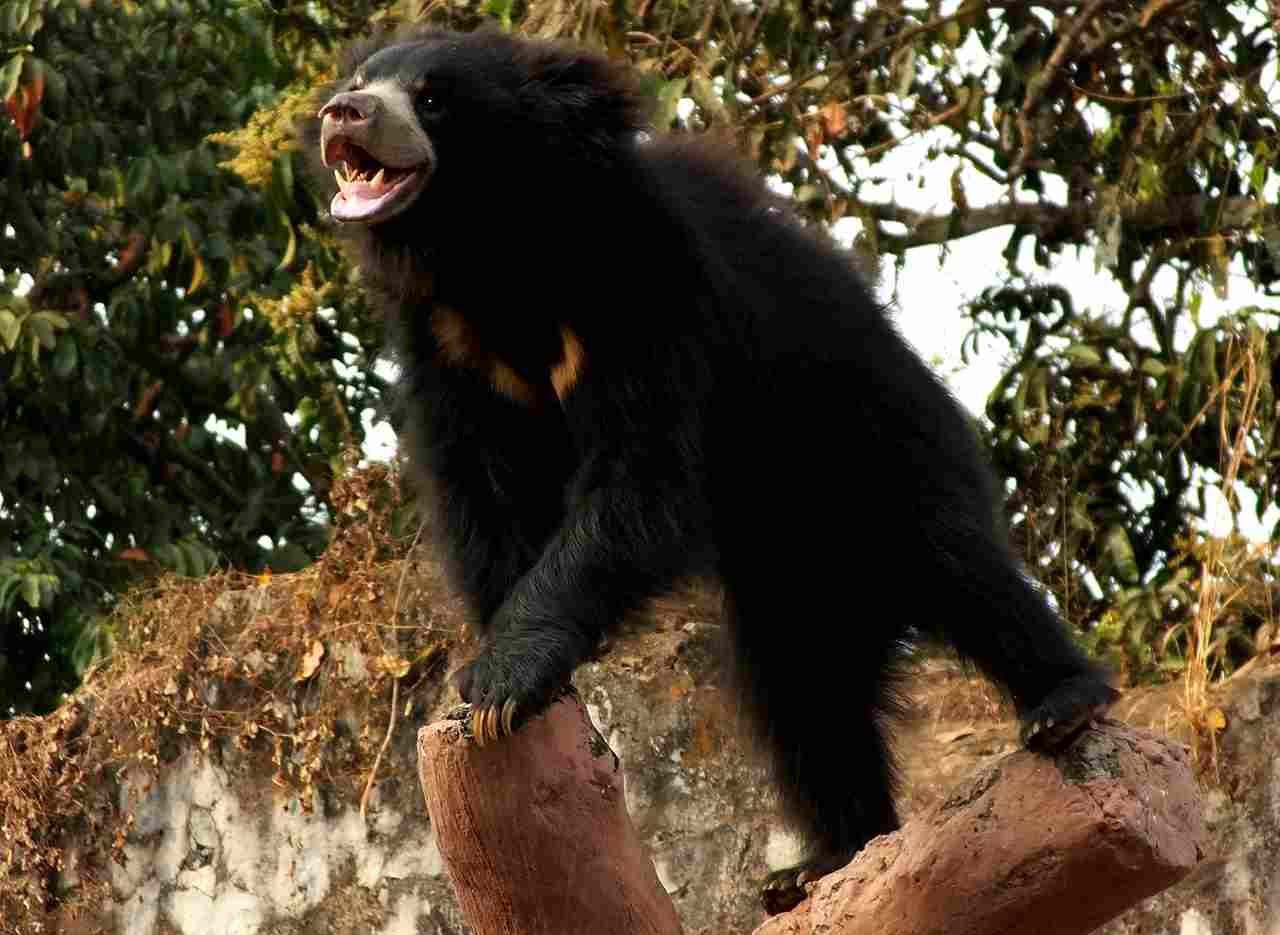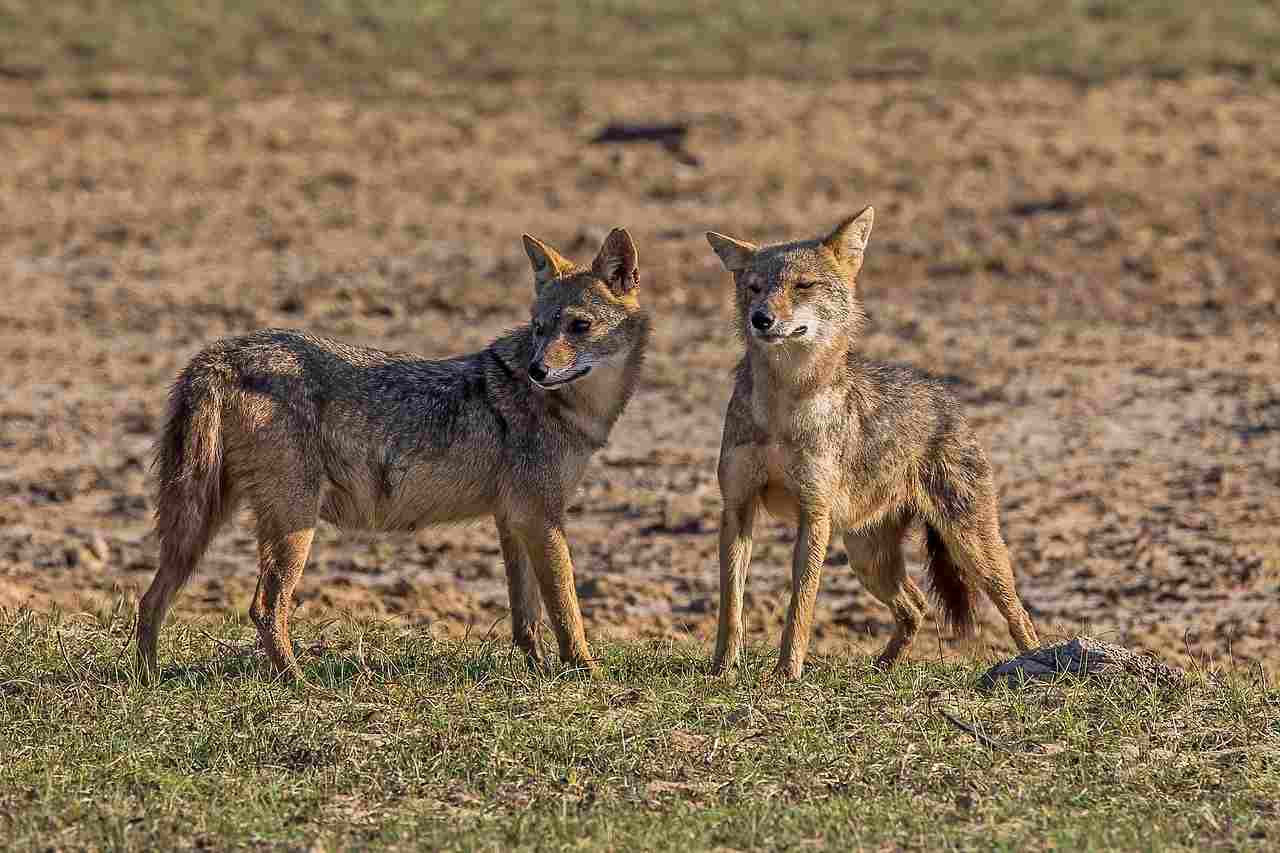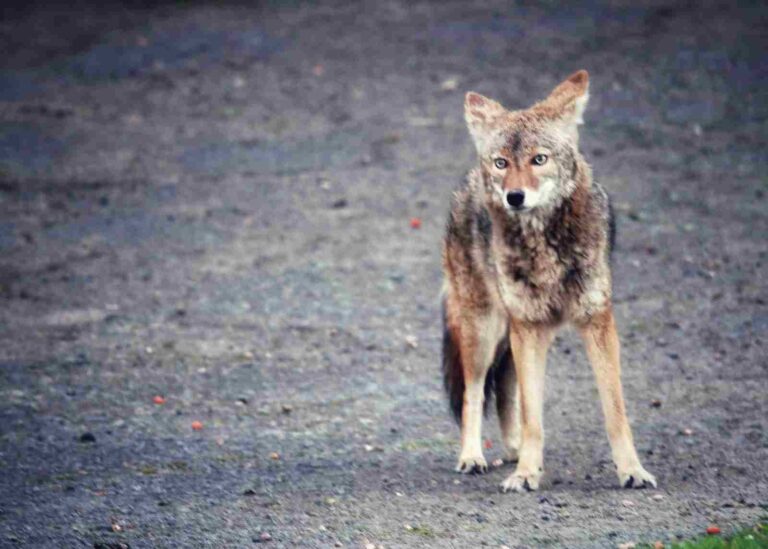Wolf Vs Wolverine Size, Weight, Ecological Comparison
When comparing the wolverine and the wolf, size plays a crucial role in determining their abilities. A single wolverine can overpower a wolf if they are of similar size, thanks to its stamina, ferocity, and skilled offense.
However, in the wild, a large wolf or a pack of wolves would have the upper hand against a wolverine. This article will explore various factors that can be used to compare these two predatory animals.
Key Outcomes
*Biological Comparison
Wolf and wolverine may seem similar in some ways, but they are not biologically related. Wolves belong to the genus Canis and the species lupus, while wolverines belong to the genus Gulo and the species gulo. Despite their different biological classifications, there are some interesting comparisons to be made between these animals.
*Size and Weight Comparison
The size and weight of wolves and wolverines are notable points of comparison. When it comes to size, wolves are generally larger than wolverines. Wolves can reach lengths of up to 6.5 feet and stand around 3.5 feet tall at the shoulder. In comparison, wolverines are smaller, measuring around 3.5 feet in length and standing about 1.5 feet tall at the shoulder.
In terms of weight, wolves are also heavier than wolverines. Adult wolves can weigh anywhere between 70 to 150 pounds, with some individuals even exceeding 200 pounds. On the other hand, wolverines are relatively lighter, with adult weights ranging from 20 to 55 pounds.
This significant difference in size and weight between wolves and wolverines contributes to variations in their physical capabilities and ecological roles. Understanding these distinctions helps to paint a clearer picture of these fascinating animals and their respective places in the natural world.
*Physical Capability Comparison
On a pound-for-pound basis, wolverines are much stronger than wolves.
When comparing the physical capabilities of wolves and wolverines, it is important to consider which animal is stronger and capable of overpowering the other. While both animals possess unique strengths, wolves generally have a stronger physical capacity compared to wolverines.
Wolves are known for their powerful bite force and impressive speed and agility, which contribute to their hunting success. Wolverines, on the other hand, rely on their tenacity and endurance to survive in their habitat.
1). Taxonomy
The taxonomy of wolves and wolverines reveals interesting similarities and differences between the two species. Wolves belong to the genus Canis and the species lupus, while wolverines are classified under the genus Gulo and the species gulo.
Both animals are part of the larger family Canidae, which includes other canids such as foxes and domestic dogs. However, wolves are specifically classified as members of the subfamily Caninae, while wolverines belong to the subfamily Mustelinae, which also includes other mustelids like badgers and otters.
In terms of their physical characteristics, wolves and wolverines display distinct differences. Wolves are known for their sleek and muscular build, with a height at the shoulder ranging from 26 to 32 inches. Wolverines, on the other hand, have a stockier and more compact stature, measuring around 12 to 18 inches in height.
While both animals are carnivorous mammals, their dietary preferences differ. Wolves primarily feed on large ungulates such as deer and elk, while wolverines have a more varied diet that includes smaller mammals, carrion, and even plant matter.
2). Appearance
The appearance of wolves and wolverines is distinct and adapted to their respective environments. Both animals have unique coats, fur, and skin that serve different purposes.
Wolves have a dense and thick coat that provides insulation in cold climates. Their fur can vary in color, ranging from gray to brown, and even white in some Arctic subspecies. This variation helps them blend into their surroundings and provides camouflage during hunting or when they need to hide from predators. Wolves have a sleek and muscular build, which contributes to their agility and speed.
On the other hand, wolverines have a coarse and shaggy fur that helps protect them from harsh weather conditions. Their fur is usually dark brown, which allows them to blend into the forested areas they inhabit. Wolverines have a stocky and compact stature, which gives them strength and endurance for traversing rugged terrains.
In terms of size, wolves are generally larger than wolverines. Wolves can reach lengths of up to 6.5 feet and weigh between 70 to 150 pounds, depending on the subspecies. Wolverines, on the other hand, are smaller, measuring around 3 to 4 feet in length and weighing between 20 to 40 pounds.
3). Size
When comparing the size of wolves and wolverines, we need to consider their total body length and height at the shoulders. Wolves are generally larger than wolverines, with an average length of up to 6.5 feet. They can stand at a height of around 2.5 to 3.5 feet at the shoulders. Wolverines, on the other hand, are smaller in size, measuring around 3 to 4 feet in length. They have a height at the shoulders of approximately 1.5 to 2 feet.
The size difference between these two animals is significant. Wolves have a more elongated body structure, allowing them to cover long distances efficiently. Their larger size also gives them an advantage when hunting and taking down prey. Wolverines, although smaller, are known for their agility and ability to navigate through rugged terrains. Their compact size enables them to maneuver through dense forests and climb trees with ease.
In terms of size, wolves clearly surpass wolverines. However, it’s important to note that size is just one aspect of their overall physical characteristics. The next section will delve into the weight comparison between these two mammals.
4). Weight
When comparing the weight of wolves and wolverines, it is evident that wolves are significantly heavier than wolverines. Wolves can weigh anywhere between 70 to 150 pounds, with some larger individuals reaching up to 200 pounds. On the other hand, wolverines are much smaller and lighter, weighing around 20 to 40 pounds on average.
The weight difference between these two animals plays a crucial role in their overall physical capabilities. Wolves, with their larger size and weight, have the advantage of overpowering their prey and taking down larger animals. Their strength and weight allow them to bring down ungulates such as deer and elk, which are essential for their survival.
In contrast, wolverines rely more on their agility and cunning rather than sheer strength. Their smaller size and weight enable them to navigate through narrow crevices and burrows, making them excellent hunters of smaller prey like rodents and rabbits. Wolverines are known for their ability to scavenge and steal food from other predators, utilizing their agility to outmaneuver larger competitors.
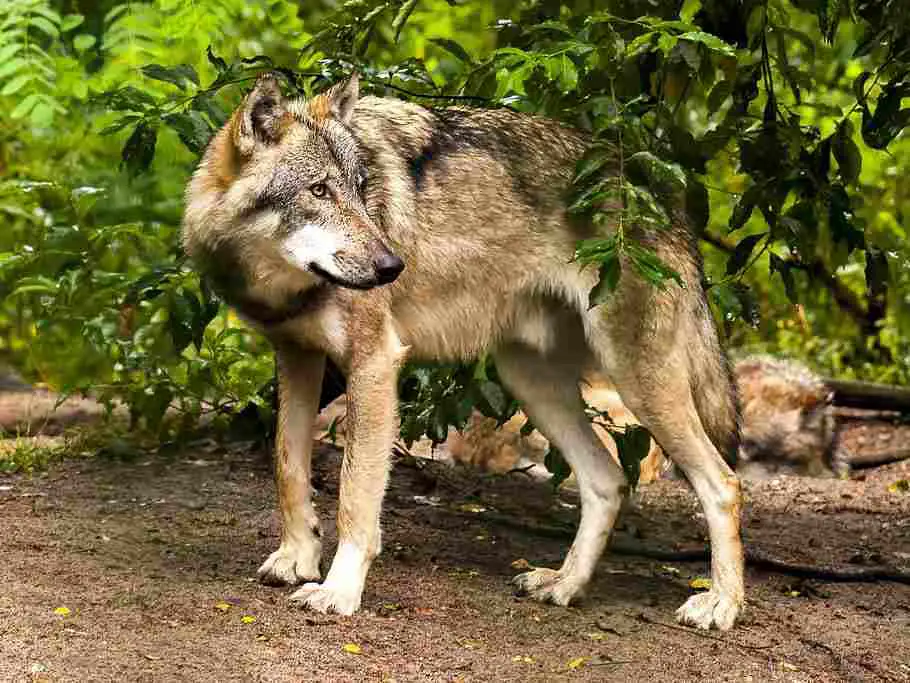
5). Speed and Agility
When comparing the speed and agility of wolves and wolverines, there are notable differences between these two animals. Wolves are known for their impressive speed and agility, allowing them to chase down their prey with precision. With their long legs and streamlined bodies, wolves can reach speeds of up to 35 miles per hour, making them highly efficient hunters.
On the other hand, wolverines may not possess the same level of speed as wolves, but they make up for it with their exceptional agility. Wolverines are incredibly nimble and can navigate through rugged terrains and dense forests with ease. Their ability to climb trees and traverse steep slopes gives them an advantage when hunting or scavenging for food.
While wolves rely on their speed to chase down their prey, wolverines utilize their agility to outmaneuver and ambush smaller animals. Wolverines are known for their ability to change direction quickly, making it difficult for their prey to escape. This agility also helps them in defending their territories and protecting their food from other predators.
6). Bite Force
When comparing the bite force of wolves and wolverines, there are significant differences between these two animals. Bite force is a crucial factor in determining an animal’s hunting and feeding capabilities.
Wolves have a formidable bite force, with an average psi (pounds per square inch) of around 400. This powerful bite allows them to take down large prey, such as elk or bison, by exerting immense pressure on their target. The strength of a wolf’s bite is essential for immobilizing and ultimately killing their prey.
On the other hand, wolverines possess an even more impressive bite force. With an average psi of around 500, wolverines have one of the strongest bites among land mammals. This exceptional bite force enables them to crush bones and tear through tough hides, making them highly efficient scavengers.
The difference in bite force between wolves and wolverines can be attributed to their respective feeding habits. While wolves primarily rely on hunting and taking down live prey, wolverines are known for their scavenging abilities. Wolverines often encounter carcasses and need a powerful bite to access the nutritious marrow and meat within.
7). Overall Physical Capacity (Which is Stronger?)
When comparing the overall physical capacity of wolves and wolverines, it is important to consider various factors that we have evaluated and compared. While the wolverine may be stronger for its size, it is worth noting that larger wolves are generally stronger than wolverines.
In terms of sheer strength, a large wolf would have the advantage over a wolverine in a violent confrontation. Wolves are known for their powerful bite force, which allows them to take down large prey and immobilize them effectively. Additionally, their size and weight give them an advantage in terms of physical dominance.
However, it is important to consider that the wolverine possesses its own unique strengths. Despite being smaller in size, wolverines have an impressive bite force that surpasses that of wolves. This exceptional bite force enables them to crush bones and tear through tough hides, making them highly efficient scavengers.
8). Habitat
Wolves are highly adaptable and can be found in a wide range of ecosystems, including forests, tundra, grasslands, and mountains. They have a vast geographic range, inhabiting North America, Europe, Asia, and even parts of Africa. Wolverines, on the other hand, have a more limited distribution and are primarily found in boreal forests and arctic regions.
Wolves are social animals that live in packs, which allows them to hunt cooperatively and defend their territory. They require large areas of land to roam and hunt, making them more commonly found in remote and less populated areas. Wolverines, on the contrary, are solitary creatures that have a smaller home range. They are known for their ability to traverse difficult terrain, including deep snow and rugged mountains.
Despite their differences in habitat preference, both wolves and wolverines are well adapted to their respective environments. Wolves have evolved to withstand extreme temperatures and have thick fur to protect them from the cold. Wolverines, on the other hand, have specialized adaptations such as large snowshoe-like paws that enable them to move efficiently in deep snow.
While wolves have a broader habitat range and require larger territories, wolverines have unique adaptations that allow them to thrive in harsh arctic environments.
9). Lifespan
When comparing the lifespan of wolves and wolverines, it is important to consider their biological differences and ecological adaptations. Wolves typically have a lifespan of 6 to 8 years in the wild, although some individuals have been known to live up to 13 years. Wolverines, on the other hand, have a shorter lifespan, with an average of 5 to 7 years in the wild.
Several factors contribute to the difference in lifespan between these two animals. Wolves are social animals that live in packs, which provides them with protection, support, and a higher chance of survival. Wolverines, being solitary creatures, do not benefit from the same level of social support and may face more challenges in finding food and defending themselves.
Additionally, the ecological pressures and environmental conditions in which these animals live also play a role in their lifespan. Wolves are top predators and have a significant impact on their ecosystems. This can lead to competition for resources and potential conflicts with other predators or humans, which may affect their lifespan. Wolverines, although also predators, have a more specialized diet and are less likely to encounter such conflicts.
While wolves generally have a longer lifespan compared to wolverines, various factors such as social structure, ecological pressures, and environmental conditions contribute to these differences.
10). Behavior
The behavior of wolves and wolverines differs significantly due to their distinct ecological adaptations and social structures. Wolves are highly social animals, living in packs that consist of a dominant alpha pair and their offspring. This social structure allows for cooperative hunting, efficient communication through vocalizations, and the sharing of parental responsibilities. Wolves exhibit complex social behaviors, such as forming strong bonds within the pack and displaying hierarchical interactions.
On the other hand, wolverines are solitary creatures, with individuals typically occupying large territories. They are known for their aggressive and territorial nature, often defending their territories fiercely. Wolverines are less vocal compared to wolves, relying more on scent marking to communicate with other individuals. Their behavior is primarily focused on feeding, as they are opportunistic scavengers and predators.
In terms of parenting, wolves exhibit a high level of parental care, with both parents participating in raising their offspring. Wolverines, however, have a more independent parenting style, with females giving birth to a litter of kits and providing minimal care before they become self-sufficient.
Generally, the behavior of wolves and wolverines reflects their different ecological roles and social structures. Wolves rely on cooperation and social bonds, while wolverines are solitary and more focused on individual survival and territorial defense.

11). Reproduction
Wolves and wolverines have distinct reproductive strategies that reflect their biological differences. Wolves are viviparous, meaning they give birth to live young. The gestation period for wolves is around 63 days, during which the female carries and nourishes the developing pups in her womb. After birth, the pups are completely dependent on their parents for survival and are cared for within the pack.
On the other hand, wolverines are also viviparous, giving birth to live young. However, their gestation period is longer, lasting approximately 30 to 50 days. Female wolverines typically give birth to a litter of two to three kits, which are born blind and helpless. The mother provides minimal care for the kits, as they quickly develop and become self-sufficient.
When comparing the reproduction of wolves and wolverines, it is evident that wolves have a more complex and cooperative approach. The pack structure allows for shared parental responsibilities and the survival of the young is dependent on the collective efforts of the pack. Wolverines, on the other hand, have a more independent reproductive strategy, with minimal parental care provided by the female.
12). Danger Posed to Humans
When considering the danger posed to humans by wolves and wolverines, it is important to examine their behavior and interactions with human settlements. Wolves are known to have a wide range and can sometimes come close to human settlements in search of food or territory. However, they generally avoid direct contact with humans and are not typically aggressive towards them. Instances of wolf attacks on humans are rare, and the rate of human deaths caused by wolves is extremely low.
On the other hand, wolverines are solitary animals and are less likely to come into contact with humans. They prefer remote and less populated areas, making encounters with humans uncommon. Wolverines are generally not aggressive towards humans unless they feel threatened or cornered. The rate of human deaths caused by wolverines is also very low.
If you do happen to encounter a wolf or wolverine in the wild, it is important to exercise caution and respect their space. Keep a safe distance and avoid approaching or provoking the animal. In the rare event of an aggressive encounter, it is recommended to back away slowly and make yourself appear larger by raising your arms or opening a jacket. It is crucial to remember that these animals are wild and should be observed from a distance.
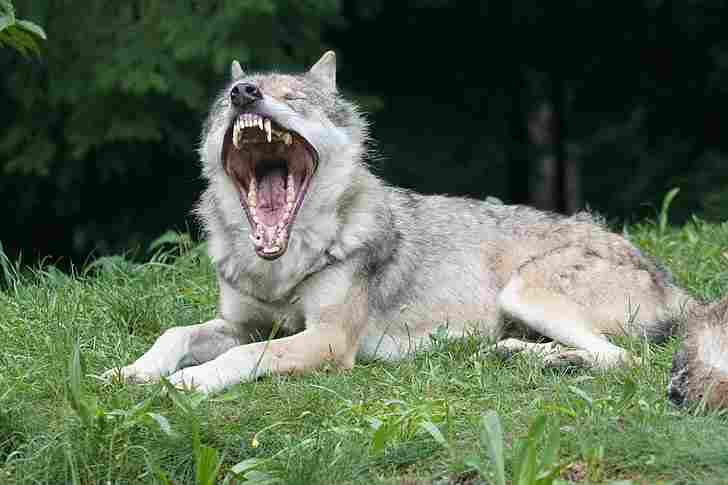
13). Conservation Status
The conservation status of wolves and wolverines is an important aspect to consider when assessing the survival of their wild populations. Both animals face different levels of threat and have varying degrees of protection.
Wolves, in general, have a conservation status that varies depending on the specific species and geographical location. Some wolf species, such as the gray wolf, are listed as “least concern” by the International Union for Conservation of Nature (IUCN). However, other species, like the red wolf and the Ethiopian wolf, are classified as “endangered” or “critically endangered” due to habitat loss, human persecution, and disease.
Wolverines, on the other hand, have a more precarious conservation status. They are listed as “least concern” globally by the IUCN. However, in some regions, such as the contiguous United States, wolverines are considered “threatened” due to habitat fragmentation, climate change, and trapping.
The main threats to the survival of wild wolf populations include habitat loss, human persecution, and conflicts with livestock. Conservation efforts focus on protecting their habitats, implementing measures to reduce human-wolf conflicts, and promoting coexistence between wolves and local communities.
For wolverines, the main threats include habitat loss, climate change, and trapping for fur. Conservation initiatives aim to preserve their habitats, monitor populations, and regulate trapping activities to ensure sustainable harvest levels.
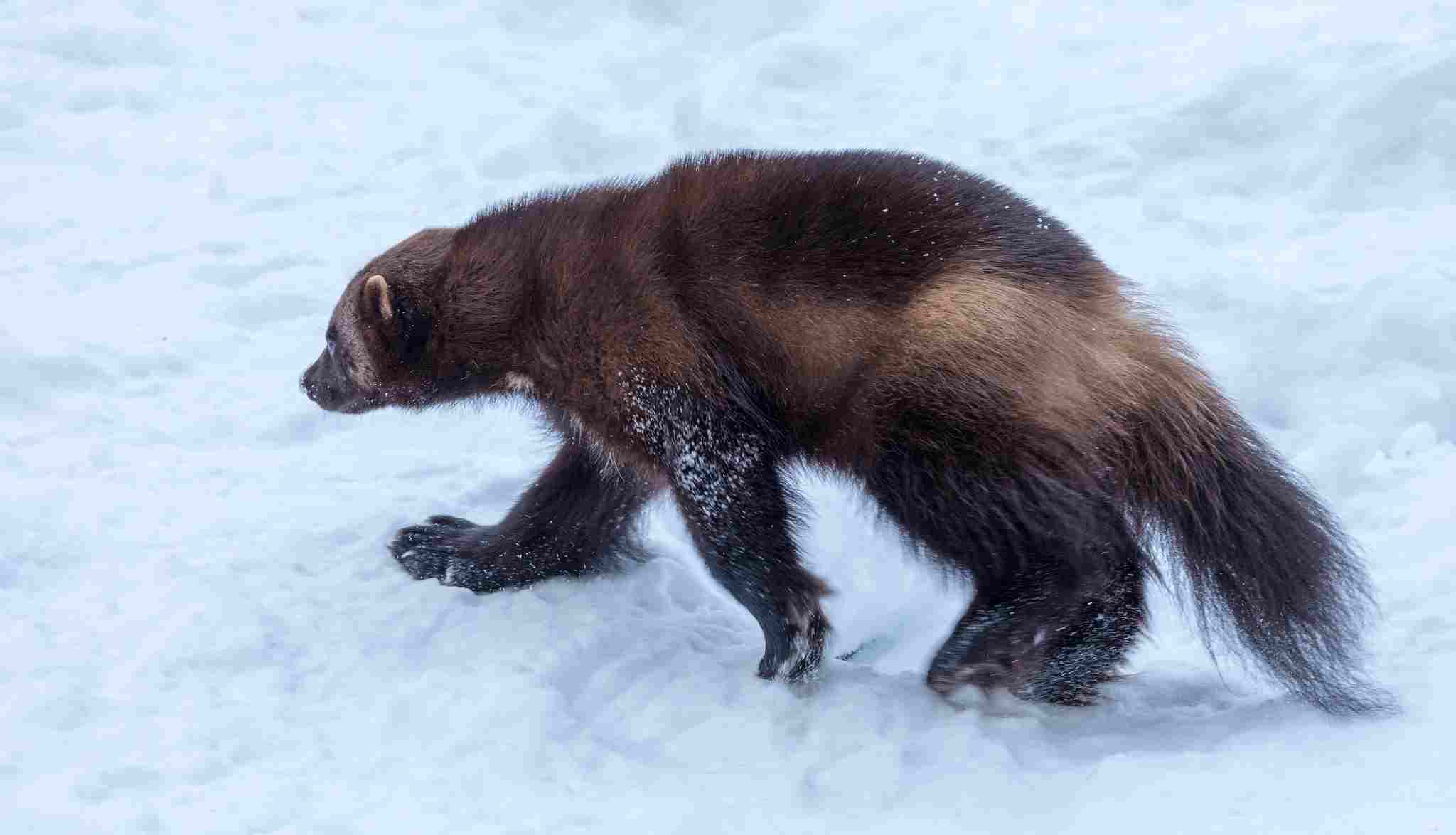
Conclusion
The comparison between wolves and wolverines reveals both similarities and differences in various aspects.
I). SIMILARITIES
Both wolves and wolverines are carnivorous mammals that play important roles in their respective ecosystems. They are both skilled hunters and have adaptations that allow them to survive in harsh environments.
Additionally, both animals have a conservation status that varies depending on the specific species and geographical location. While some wolf species are listed as “least concern,” others, like the red wolf and Ethiopian wolf, are classified as “endangered” or “critically endangered.” Similarly, wolverines are listed as “least concern” globally, but are considered “threatened” in certain regions.
II). DIFFERENCES
Despite their similarities, there are notable differences between wolves and wolverines. Wolves are larger and heavier than wolverines, with the gray wolf being the largest wolf species. Wolverines, on the other hand, are smaller and more agile. Wolves have a longer lifespan compared to wolverines, with some individuals living up to 13 years in the wild.
Wolverines have a shorter lifespan, typically living up to 7 years. Additionally, wolves are known for their strong social structure and pack behavior, while wolverines are solitary animals.
